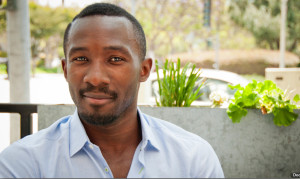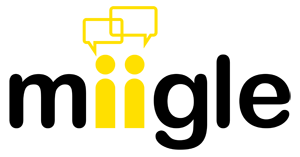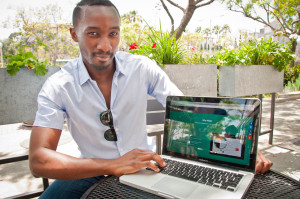Miigle Revisited | A SoCal Startup With a Global Mission
We recently sat down with Luc Berlin, co-founder of Miigle, a SoCal startup that has an aggressive global mission to bring entrepreneurs together from around the world. We first interviewed Luc in 2012, just as he was launching the prototype for Miigle. Back then, it was just him following his dream. Fast forward a year and a half later, and a lot has changed for Luc and Miigle. We followed up with Luc to see just how he’s been managing the entrepreneurial waters. On the day of Miigle’s public launch, we chatted about developing his team, lessons learned, and how World Cup soccer fits into his vision.
TZ: In our last interview you said that you were about 25% at capacity of your original vision for Miigle. A year and a half later and post-public launch, at what capacity do you think Miigle is today of your original vision?
LB: Currently, we are about 75% and that’s really because in this phase we have developed what I think is the most critical aspect of our platform, which is the technology that allows us to truly build our community. We have been building the type of community that we want to have for startups and founders around the world, and also the first stages of the algorithm that powers the entire platform. All of this makes such a big difference in terms of reducing the amount of work and time that members need to find meaningful connections.
Can you explain in greater detail how the platform’s algorithm works to make it easier for entrepreneurs to find the right partner/advisor and to extend assistance to one another?
The quintessential problem that every startup has is one of visibility. Actually, I would say relevant visibility. Unless people feel a certain level of appeal towards what you are doing, they are less likely to want to help you.
Miigle was founded on the whole concept of collaboration. What differentiates us from other platforms is that our members are helping each other – it’s about startups helping each other. It’s not about startups having to vie for the attention of a small group of experts.
So the way the Miigle algorithm works is that we look at founders and we look at projects and we try to match founders and projects with the skillsets and interests of other members. For example, take someone who is developing a travel solution as a mobile application. He or she may be a technical person, but not necessarily a businessperson. Through the algorithm, Miigle would introduce him or her to someone who is interested in mobile and travel but has a business background. So, essentially Miigle matches interests and skillsets.
Can you explain to our readers how Miigle works from a user experience perspective? What happens when a user signs up and logs in? How do they begin the journey of finding collaborators?
We’ve made it very easy for people to access the Miigle platform. As a matter of fact, you don’t need to be a member in order to browse the startups. That’s a big difference between us and other platforms. Once you have logged in to your Miigle account, the first step is editing your profile. It’s just like editing any other social profile — you add in a photo and set your interests, and you also select your personas. Personas in Miigle are very important. On most platforms you can only be one persona, but Miigle allows people to assume different personas. You can be an entrepreneur and at the same time you can be a mentor or an investor to someone else’s project.
Entrepreneurs who have a startup upload their company’s information and create a startup page. Again, we’ve made this very easy. We’ve integrated with AngelList, Kickstarter and CrunchBase so if you already have a profile on any of those platforms, you simply copy the URL, paste it into your Miigle account and we can automatically pull in your startup’s information. You can create your startup page in two clicks.
Members can freely browse and explore the site. You can rate a startup and share your views on the startup’s concept. You can keep yourself updated on the activities of the startup. You can also share it and send it to people that you know. You can also foster it. We’re not a crowdfunding platform but we accept projects that are being crowdfunded. If you have a donation page from one of the platforms like Kickstarter or Crowdfunder, you simply paste that URL in your Miigle account, then when someone clicks ‘foster’ they are redirected so that they can crowdfund your startup and donate money to your cause.
In 2012 Miigle was just in its beginning stages. How much has the product changed from where it was in 2012 and where it is today?
 When I first talked with TZ, it was pretty much me just working on the platform and I had outsourced the development to a firm. Back then we invested very little in design. I’d say we also invested very little in user experience. We were just trying to test our concept. We thought we had a great idea and we wanted to see how people responded to it. Now, over the past 2 years, we’ve really taken ownership of the concept. I’ve spent time building a team and now we have absolutely a great cast of people. We invested a lot more in design and user interaction by trying to really simplify the experience for whoever visits Miigle, whether member or non-member. We also buffed up our technology. The site is now a lot faster. The algorithm works a whole lot better. We think that all of these things has led to a much more improved user experience for all who visit Miigle.
When I first talked with TZ, it was pretty much me just working on the platform and I had outsourced the development to a firm. Back then we invested very little in design. I’d say we also invested very little in user experience. We were just trying to test our concept. We thought we had a great idea and we wanted to see how people responded to it. Now, over the past 2 years, we’ve really taken ownership of the concept. I’ve spent time building a team and now we have absolutely a great cast of people. We invested a lot more in design and user interaction by trying to really simplify the experience for whoever visits Miigle, whether member or non-member. We also buffed up our technology. The site is now a lot faster. The algorithm works a whole lot better. We think that all of these things has led to a much more improved user experience for all who visit Miigle.
Miigle has also grown in the number of employees since our 2012 interview. Share with us the process you underwent to find who you wanted to work with. How did you identify what you needed, and how did you come to hire the right people?
It was a bunch of different strategies really. I would say luck had a lot to do with it as well. Our co-founder and CTO, Josh Fester and I met each other online and within a month he moved from St Louis to LA. We’ve been working on Miigle ever since.
To find our other co-founder John Pavlick who is our CSO, I posted an internship online and he responded to it. He joined us as an intern and within a short period of time he did an amazing amount of work – truly a genius guy! – and within a month he came on as a co-founder. I think that really helped us to get the ball rolling. The more improvements that we made, the more and more people approached us, wanting to be a part of it and that’s been great.
In 2012, you were not considering outside funding. Has this changed for you in the last year and a half?
Yes that has changed. I didn’t feel like we were ready in 2012 and I really wanted to prove myself first. I wanted to build a product, grow the community and make sure that we had something that was valuable before seeking funding. Right now, we are working toward that stage, and within 3 months or so we will be actively starting our fundraising.
We know that Miigle is a platform for entrepreneurs to share ideas. What is different about Miigle that an entrepreneur will come to expect of the site?
 We all know that being an entrepreneur is extremely hard. The hardest part is finding the right people to help you. As a society, the way we present that type of help is through institutions. For example, we go to venture capitalists or we go to angel investors. Or an incubator or an accelerator, but as we have seen there just aren’t enough of these institutions to support all the entrepreneurship around the world. So, we are presenting an alternative solution. We wanted to create a paradigm shift. What I think is that for entrepreneurs, we are the solution to the challenges that each one of us faces. We wanted to create a platform where entrepreneurs who have been through the hustle, who have been through the pain, who have been through the joy of building something – can help each other, no matter where they live in the world. So I would say anyone who joins Miigle will feel a sense of community because these are people who are just like you, and they can contribute to your efforts.
We all know that being an entrepreneur is extremely hard. The hardest part is finding the right people to help you. As a society, the way we present that type of help is through institutions. For example, we go to venture capitalists or we go to angel investors. Or an incubator or an accelerator, but as we have seen there just aren’t enough of these institutions to support all the entrepreneurship around the world. So, we are presenting an alternative solution. We wanted to create a paradigm shift. What I think is that for entrepreneurs, we are the solution to the challenges that each one of us faces. We wanted to create a platform where entrepreneurs who have been through the hustle, who have been through the pain, who have been through the joy of building something – can help each other, no matter where they live in the world. So I would say anyone who joins Miigle will feel a sense of community because these are people who are just like you, and they can contribute to your efforts.
The other big difference with Miigle is that we actually want to get the public involved. The way I describe Miigle is that it is entrepreneurs and the general public helping each other. Social collaboration has become such a phenomenon because people want to collaborate. For the most part, people don’t because it’s hard for them to find interesting projects that they can be a part of, or because we’ve limited their contributions to just money. With Miigle we want to allow people – want to allow anyone – to be able to contribute to a project that they are passionate about, by making it easier for them to discover those projects and by not limiting what kind of contribution that they can have to that project. Whether it is emotional support, contributing your talent, whether it’s your money, or you know, just a simple tap on the back to an entrepreneur that says ‘hey I like what you’re doing.’ We think all of these things have value. They certainly have value in the real world and we want to replicate these things online.
In 2012 you were building the Miigle platform with a global perspective. Can you share with our readers how you are planning to communicate the message of Miigle on a global scale?
Our mission has always been to be a global company. When we launched our prototype in 2012, we were extremely surprised to notice that more than 50% of people who joined our platform were from other countries. These were people who joined the platform then emailed me with messages saying “I love this” or “we’ve been looking for something like this” and “this makes sense.”
In the US we have the infrastructure to foster entrepreneurship. In many other places in the world, they don’t. What are we doing to help those entrepreneurs who are not in the US? First, we plan to work with writers in different parts of the world and share stories about Miigle to their readers. The second part really is through the platform and making sure that when someone who is from another country joins Miigle that they don’t feel alienated by the user experience, and the platform encourages them to invite their friends and teammates to join them. Right now, the platform is mainly in English but we plan on supporting different languages. We also plan on finding ways to create events in different parts of the world, and by having an ambassadorship program of some kind.
What’s the farthest country where a user has had some interaction with Miigle?
We’ve had people reach out to us from Brazil, Argentina, South Korea, China, and the Middle East. I think at this point, we have had someone from each one of the continents, except Australia. All of the global reach has been very exciting.
Out of all the lessons that you have learned since 2012, what would you single out and say has been the most important thing that you’ve learned and why?
Without a doubt, without a doubt, and without a doubt….it is team. Building a team. It sounds a bit cliché when people say it, but it is absolutely true: your team makes you or breaks you. I essentially started Miigle alone and now looking back, there is no way I could have done what we’ve done on my own. To be able to find people who share your vision, who share your passion, and have complementing skillsets, is key, I believe, to the success of any startup. That’s what we want Miigle to help people do – to essentially make it easier for entrepreneurs to find the right people. For me I was a bit fortunate, but it also required a lot of legwork. I had to go to networking events. I had to spend a lot of time on the Internet. I spent a lot of money as well. But this is exactly what Miigle wants to solve. We want to remove all that legwork, all that wasted time, all that wasted money, and all that wasted energy. We want to make it easier for innovators to find people who can help them.
I saw your World Cup tickets on Instagram. Will you be recruiting social entrepreneurs in Brazil?
Absolutely, why not? I’m going to Brazil, and I will be working for sure. I have never been to Latin America and the region is really booming with entrepreneurship. Brazil is one of the BRIC countries – Brazil, Russia, India, China. I see these places as the next wave of innovation. There is this concept of reverse innovation, where now it is these countries who are innovating for the rest of the world. It’s no longer just the US innovating. Now you see countries like India and China, creating amazing things that we all benefit from. For me, going to Brazil is of course an opportunity to watch World Cup, but I will also be looking at the level of entrepreneurship that is there. I did the same thing in China a couple of years ago. Scandinavia and Africa as well. I love to travel to other parts of the world and I always learn things that I can add to Miigle’s platform. | Images via Juan Monsalvez









